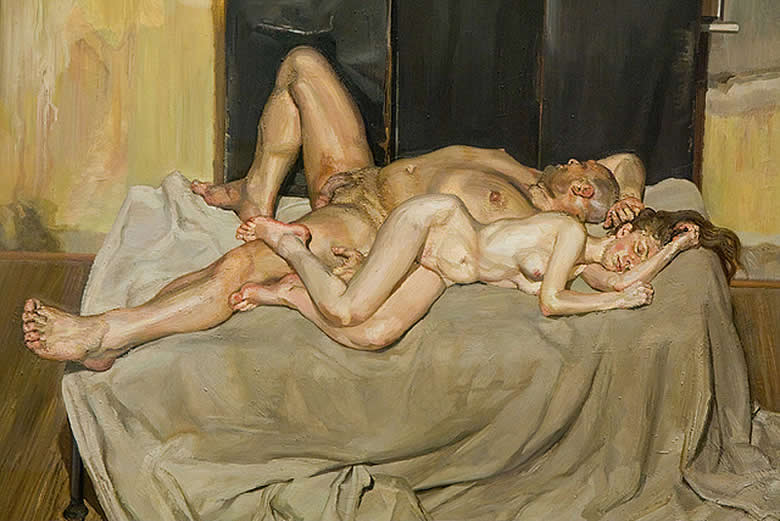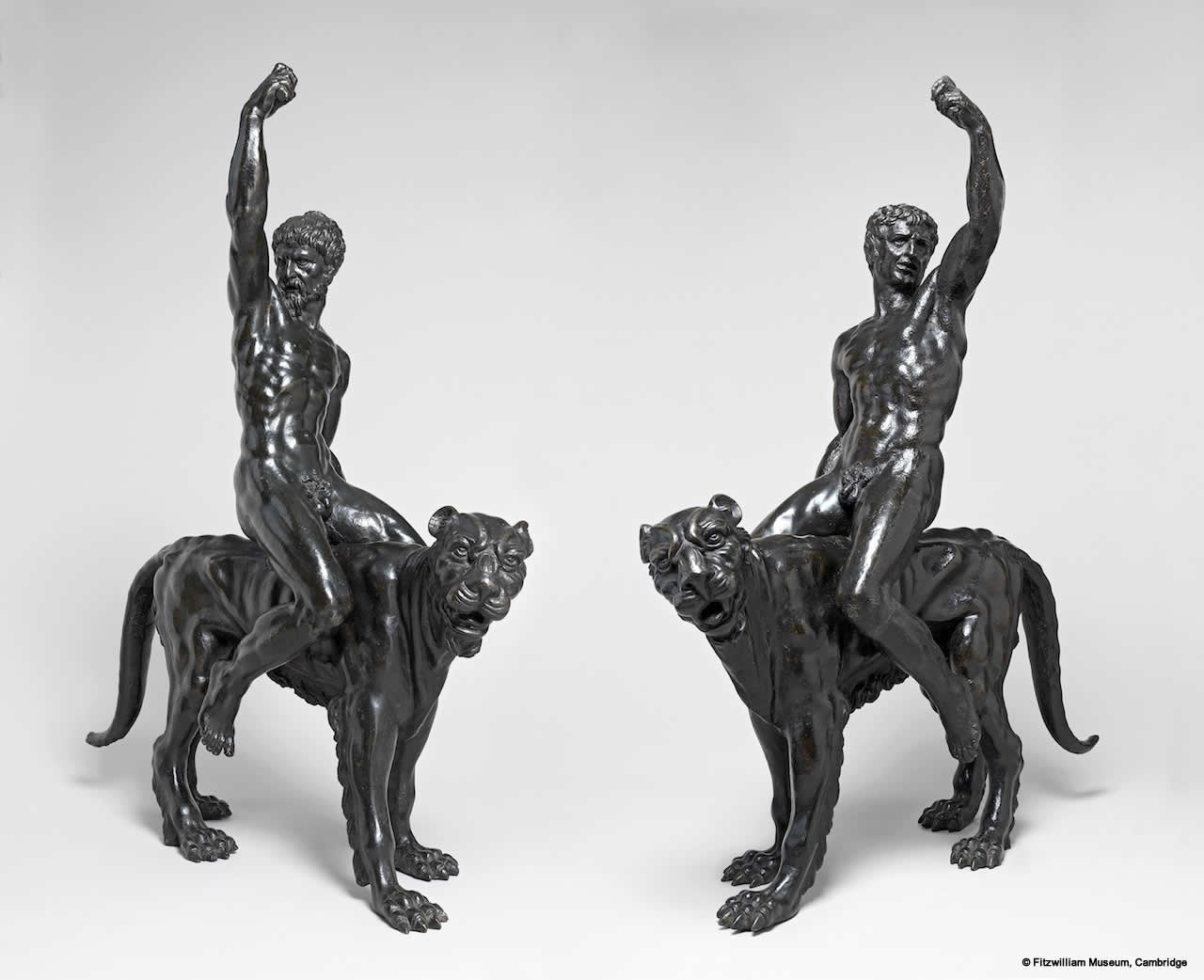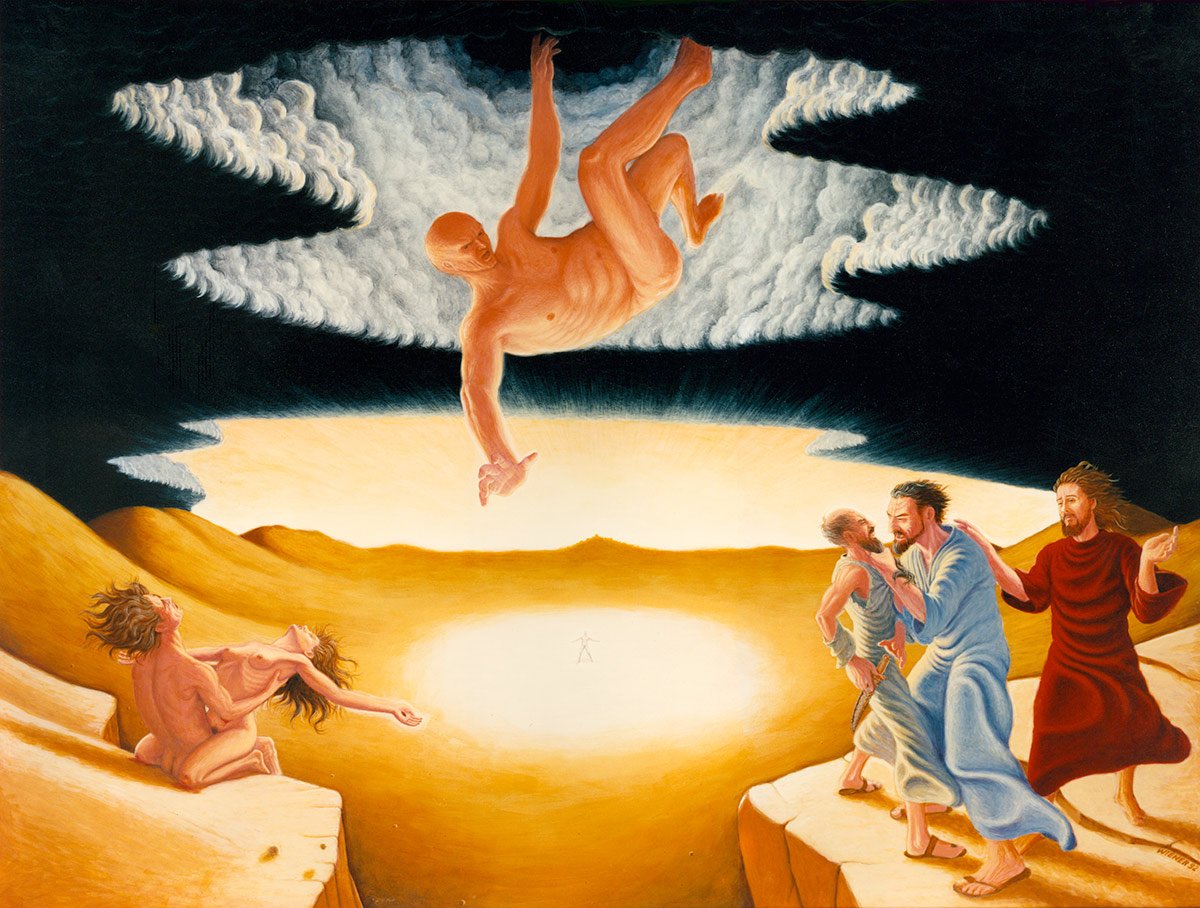Lucien Freud
At The Metropolitan Museum of Art
With the passing of Lucian Freud on July 20th, 2011 at the age of 89, a chapter in the figurative arts was closed. To honor his achievements, The Metropolitan Museum of Art in New York City is hosting a small but spectacular exhibit of 17 paintings, along with a few by his friends Francis Bacon and Frank Auerbach, until December 31 2011. If you are in New York, you have no excuse to miss this. If you live outside the region, book your trip now, as it’s well worth it!
These are not paintings which appeal to higher ideals of humanity, but unflinchingly examine our animal selves in a way that would make a creationist cringe. Flesh was the point. Flesh was it’s own reward. Flesh was it’s own battlefield with thick tones crashing into one another on the canvas, threatening chaos, but somehow retaining composure with the human form.
Holding a disdain for social convention and niceties, he could be gruff to those he did not know and even some of his close friends did not have his phone number. Work was his life and it apparently pained him to be away from the studio for very long. He wanted to record as purely as possible his impressions of the reality before him in the studio and held a contempt for art he felt was contrived. After a tepid foray into surrealism in the 1940’s he rejected all the fashionable art world trends and forged ahead with his uncompromising vision. Through the various art movements and isms over the decades he built on what he knew and observed leaving his work largely out of fashion for most of his life. This was never his concern and I think in the end his legacy has been rewarded.
One can make the argument that as his grandfather Sigmund Freud created a science for people to open themselves up to personal scrutiny as a path to healing. As a portraitist, Lucian seemed to exhaust his sitters with a flaying that art critic John Russell wrote was a relationship more of an interrogator and the interrogated. For the most part Freud painted who he choose and only occasionally would accept a commission. Those who did accept Freud’s invitation to pose, knew that they would be required to submit to an intimate inspection or dissection for months, if not years, of the artist’s ruthless inspection. A sinking exhaustion can be found in the faces of many of his sitters, and I got to wondering how often a pose would begin one way only to have the model fall asleep and be recorded that way. It seemed he was digging to find something in his sitters, and probably something in his own psyche, through an excavation befitting the name Freud. “For me the paint is the person.” he told his biographer.
The works on view at the Met’s ground floor gallery show the traces of many altercations over the course of what must have been much time. Rather than scraping an appendage down as many artists do he would allow the thick slabs of paint to dry a bit before going back over and changing a limbs position. These are like roadmaps in the creation of the individual works. One can see how he would scrape up chunks of dried paint from earlier sessions, encasing them in fresh paint and giving a real sense of urgency to his working methods. “The work” it’s been said, “it was always about the work.” Looking at the paintings he did of his obese model Sue Tilley and the performance artist Leigh Bowery, it seemed he had found the perfect muses for the way he painted. Closely observing the surfaces of his works, the viewer can see the motions of painting, colors heavily slathered on, then jabbed and scraped, and pushed into human form. But what is most rewarding is the sense of motion, the act of painting that has been recorded for us to luxuriate within. (No doubt Freud was influenced by the daring brushwork of his lifelong friends Frank Auerbach and Francis Bacon who also have a few works in the exhibit.)
Preferring a palette of chalk-like flesh tones, vibrant color was rejected in the quest for the unvarnished realism he sought. Curious that he rarely titled his nudes as such, preferring to once again do away with niceties and call them what they were, ??”naked”. So naked in fact that John Russell questioned whether we had any right to be there at all! He saved the affection of his brush for his whippets, Eli and Pluto, whose portraits, although painted thickly and with earnest attention, had none of the roughness he saved for his human subjects. For all of Freud’s perceived roughness in paint and in his public demeanor, he cared deeply about the people in his life. He once asked George Dyer – Bacon’s lover – to stay and sit for him when a suicidal Dyer had nowhere else to turn. Freud said it was a favor for posing. Describing his own work, Freud called it an attempt to record the people in his life. “I work from the people that interest me and that I care about” Freud said, “in rooms that I live in and know.”
The passing of Lucian Freud this past July has no doubt left a gap in the lineage of figurative art, who else can fill that gap with the mountains of flesh he created?





















